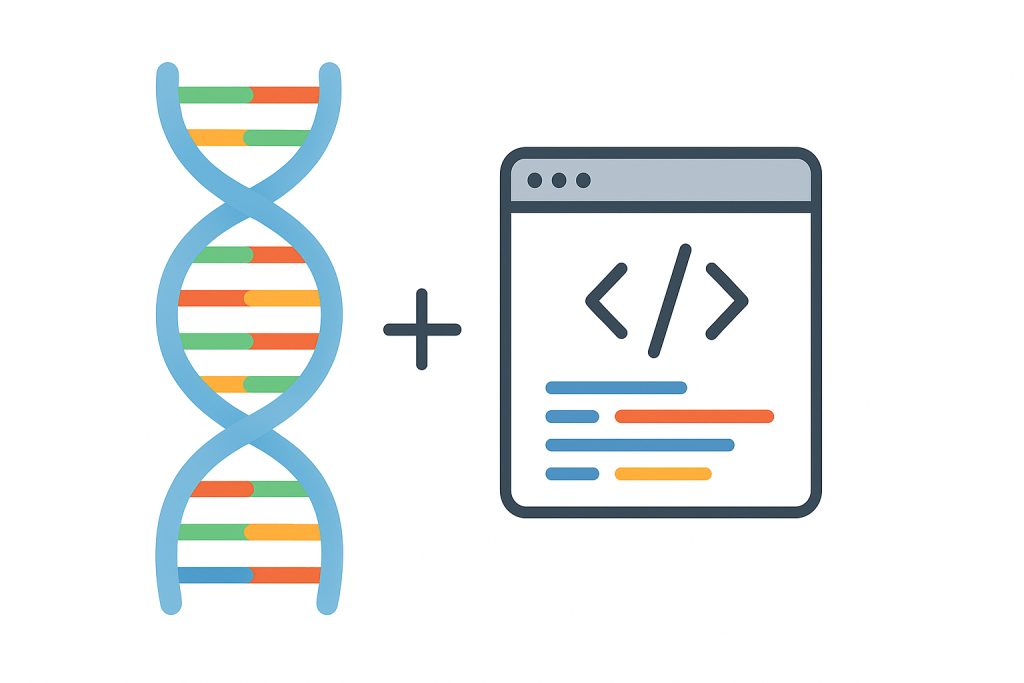What happens when students stop coding apps and start coding life?
From Digital Code to Genetic Code
The 21st-century classroom is no longer defined by screens alone.
In cutting-edge biology and computer science programs, students are learning to apply programming logic not just to software, but to living systems. Using real-world modeling tools and genetic design platforms, they’re discovering that DNA is nature’s own code — a programmable language of life.
Instead of writing instructions for machines, they’re learning how biological code determines cellular behavior, protein synthesis, and evolution itself. This approach doesn’t replace computer science — it extends it, translating coding skills into the living domain.
The Rise of Synthetic Biology in Education
“Synthetic biology” has moved from university labs into high school classrooms.
Programs such as the iGEM competition (International Genetically Engineered Machine) and initiatives like BioBuilder are giving students hands-on experience with DNA assembly, molecular logic gates, and biological simulation software.
By combining lab-based biology with computational design, students can:
- Model genetic circuits using digital twins of real organisms.
- Test biological “if-then” statements — for example, if a cell detects light, then it produces pigment.
- Simulate outcomes before conducting physical experiments.
This kind of dual fluency in code and cell helps students understand not just how systems behave, but how to design them.
Programming Logic Meets Evolutionary Systems
Programming biology isn’t about controlling nature — it’s about learning its rules through computation.
Students are introduced to the concept of living algorithms: dynamic, self-adapting systems that follow logical patterns but can evolve and respond to their environment.
By comparing these systems to computational algorithms, learners see how:
- DNA sequences resemble data structures.
- Protein synthesis follows conditional logic.
- Genetic mutations act like randomized iterations in code.
This framework turns biology into a living form of computation — one that challenges students to think in both mechanical and biological terms.
Tools That Bring Biology into Code
Modern educational tools are making this fusion tangible.
Students use accessible platforms like:
- Benchling – for designing and simulating genetic constructs.
- TinkerCell – to visualize biological networks and feedback systems.
- BioPython – a coding library for analyzing DNA and protein data.
- SBOL (Synthetic Biology Open Language) – to share standardized biological designs, just like open-source software.
With these, high school and university learners can model living systems in silico before testing them in vitro — bridging the logic of the computer lab and the creativity of the wet lab.
Educating for the Bio-Digital Future
Why does this matter for parents and educators?
Because biology is becoming the next frontier of programming. As industries pivot toward biotechnology, personalized medicine, and sustainable materials, biological coding literacy will define the next generation of innovators.
Tomorrow’s problem-solvers will need to:
- Think algorithmically and ecologically.
- Collaborate across life sciences, computer science, and ethics.
- Understand how digital models can safely interface with real-world biology.
This shift represents more than a new curriculum — it’s a new literacy. One that trains minds to navigate systems that grow, adapt, and evolve.
The Takeaway
Students aren’t just learning to code computers — they’re learning to code life.
The convergence of programming and biology is not science fiction; it’s education catching up with the future. By teaching students to model, simulate, and design biological systems, we’re preparing them for a world where the next app might not run on silicon — but on cells.
Programming biology is how the next generation learns to think both logically and alive.


